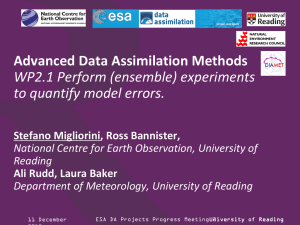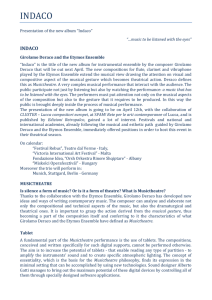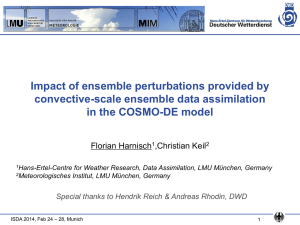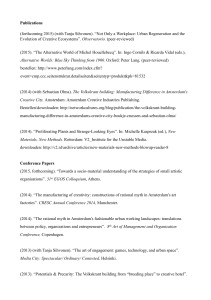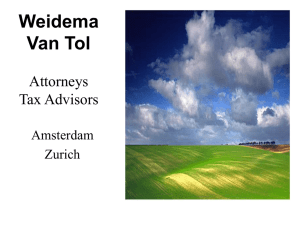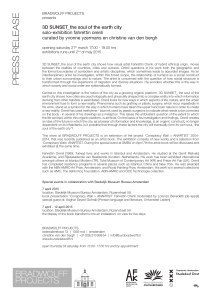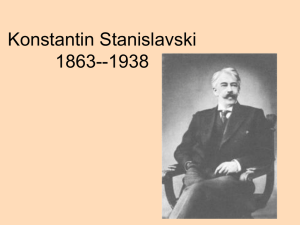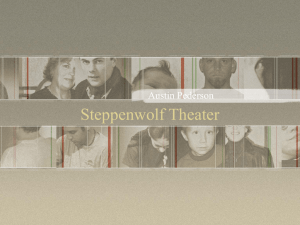PDF - Giuliano Bracci
advertisement
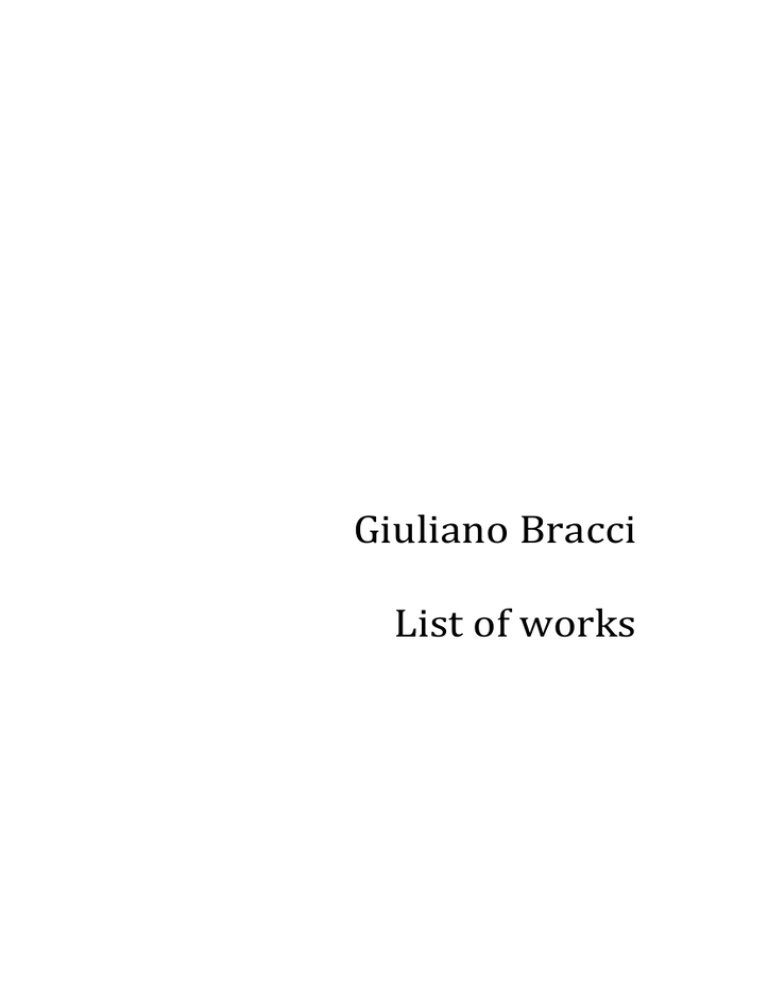
Giuliano Bracci List of works Giuliano Bracci List of works Version updated in June 2014 2 CONTENTS Contact details Biography List of works Orchestral Ensemble | 6+ instruments Chamber | 2-­‐5 instruments Vocal Solo | with and without electronics For children Librettos List of selected concerts Program notes page 3 5 7 8 9 11 11 12 12 13 15 CONTACT DETAILS Giuliano Bracci Dutch mobile +31.612451229 Italian mobile +39.3298931436 Email giulianobracci@gmail.com Website www.giulianobracci.com Donemus Website www.donemus.nl Ars Publica Edizioni Musicali Email info@arspublica.it Website www.arspublica.it 3 Giuliano Bracci 4 photo © Matteo Rossi BIOGRAPHY Giuliano Bracci was born in Rome in 1980. He studied composition with Rosario Mirigliano at the Conservatory of Florence where he graduated with full marks in 2010. He attended master-­‐classes in composition taught by Helmut Lachenmann, Stefano Gervasoni, Salvatore Sciar-­‐ rino, Barbara Hannigan and Quatuor Danel. In 2010 he moved to the Netherlands and in 2012 ob-­‐ tained a Masters Degree in Composition at Conservato-­‐ rium van Amsterdam studying with Richard Ayres. His master research “Childhood and new music” has been shortlisted for the Graduation Prize of Amsterdamse Hogeschool voor de Kunsten. He received a honourable mention at the Gaudeamus Prize 2010 for his orchestral piece “Da uno spazio bianco”, was awarded at the Young Composer Meeting 2010 and won the International SuonoSonda Competition 2009. He has been selected as a finalist of the Premio Reina Sofia 2010 with “Non sei di quelli che si incantano al paesaggio”, a piece for choir and orchestra on texts by Emily Dickinson premiered in Madrid by the Orquesta de Radio Televisión Española and Coro Nacional de España. 5 His music is published by Donemus and Ars Publica and has been performed in festivals and institutes such as Gaudeamus Music Week in Amsterdam and Utrecht, Premio Reina Sofia in Madrid, Amsterdam Concertgebouw, AAA Festival, Fondation Royaumont, Time of Music in Viitasaari, Villa Romana in Florence, Festival L’Arsenale, Cantiere Internazionale d’Arte di Montepulciano, Goethe Institut of Rome and by musicians as Orquesta de Radio Televisión Española and Coro Nacional de España, Holland Symfonia, Nieuw Ensemble, Ensemble Klang, Freon Ensemble, VocaalLab, Looptail, Ensemble L’Arsenale, Ork-­‐ est de Ereprijs. Giuliano Bracci also graduated cum laude in Philosophy at La Sapienza University of Rome with a thesis on Giordano Bruno. He was the band director of the acting company di-­‐ rected by Pippo Delbono and performed in theatre shows in Italy, France, Spain, Belgium and Poland. As assistant of Freon Ensemble he is one of the organizers of Atlante So-­‐ noro XXI, music festival in Rome. He plays the guitar, the tuba, the viola da gamba, and taught at the Testaccio School of Music of Rome. 6 LIST OF WORKS ORCHESTRAL Da uno spazio bianco (2009) orchestra Duration 9 minutes 2.2.2.2 | 2.2.2.1 | 1 | hp | strings (10.10.8.6.4) First performance: 15.10.2009 Conservatorio di Firenze, Orches-­‐ tra del Conservatorio di Firenze/Paolo P. Ciardi Also performed 11.9.2010 Gaudeamus Music Week, Amsterdam, Holland Symfonia/Hans Leenders Honourable mention at Gaudeamus Prize 2010 Published by Donemus | D 12274 Non sei di quelli che si incantano al paesaggio (2010) choir and orchestra Duration 10 minutes 2.1.2.0 | 1.1.2.1 | 2 | hp | strings (16.14.12.10.8) | SSAATTBB On texts by Emily Dickinson First performance: 06.10.2011 XXVIII Premio Reina Sofía, Teatro Monumental, Madrid, Orquesta de Radio Televisión Española and Coro Nacional de España, José Luis Temes conductor, Miguel Ángel García Cañamero choir conductor Finalist of XXVIII Premio Reina Sofia Unpublished 7 ENSEMBLE | 6+ instruments Mattino (2013) ensemble of 10 players Duration 11 minutes flute, alto flute, english horn, A clarinet, piano, string quintet Commissioned by Nieuw Ensemble, An Evening of Today First performance: 28.02.2013 Muziekgebouw Amsterdam, Nieuw Ensemble & Looptail, Gregory Charette conductor Selected for Tactus 2013 Unpublished Pÿramide, a Paul Klee (2012) ensemble of 6 players Duration 7 minutes alto sax, tenor sax, trombone, electric guitar, piano, vibraphone Commisioned by Ensemble Klang with financial support from the Nederlands Fonds Podiumkunsten. First performance: 31.05.2012 Smart Project Space, Amsterdam, Ensemble Klang Unpublished Sempre hai occhi segreti (2011) ensemble of 10 players Duration 6 minutes fl (fl+picc), cl, ob, mand, guit, harp, piano, perc, vl, vla, cello, db Written for Nieuw Ensemble First performance: 10.06.2011 Amsterdam Composers’ Festival, Nieuw Ensemble, Lucas Vis conductor Unpublished 8 Volti | Appel, Mondrian, Rembrandt (2014) ensemble of 6 players Duration 14 minutes fl (fl+bass flute), cl (cl+bass cl), perc, piano, vl, cello Commisioned by Looptail with financial support from the Nederlands Fonds Podiumkunsten. First performance: 03.04.2014 CBK Oost, Amsterdam, Looptail Unpublished CHAMBER MUSIC | 2-­‐5 instruments C’è un giardino chiaro (2011) piano and string quartet Duration 6 minutes Written for International Composer Pyramid, Sounds New, Coups de Vents First performance: 10.12.2011 International Composer Pyramid, Lille, France, ICP Ensemble Unpublished Con il disincanto, l’incanto e la frenesia (2008) 2 sopranos, flute, guitar, harp Duration 4 minutes On texts by Amelia Rosselli First performance: 18.10.2008 Compositori a Confronto, Reggio Emilia, Italy Shortlisted for Gaudeamus Prize 2009 Unpublished 9 Dalla pietra (2009) soprano, 2 violins (or violin and viola), cello, accordion Duration 6 minutes On texts by Michelangelo Buonarroti Commissioned by Ensemble Fisarchi First performance: 28.07.2009 Cantiere Internazionale d’Arte di Montepulciano, Italy, Fisarchi 1st prize at SuonoSonda International Competition Shortlisted for Gaudeamus Prize 2010 Published by Ars Publica | AP 00504 M Hortense (2013) violin, viola, cello -­‐ after Carlo Gesualdo da Venosa Duration 6 minutes First performance: 25.11.2013 Festival Gesualdo, Auditorium S. Fedele, Milano, Italy, Ensemble Sincronie Unpublished Lunedì (2011) sho, duduk, zheng, double bass Duration 6 minutes Written for Atlas Ensemble First performance: 3.9.2011 Conservatorium van Amsterdam, Atlas Ensemble Unpublished Une petite fleur bleue (2005) string quartet -­‐ after Girolamo Frescobaldi Duration 3 minutes First performance: 12.03.2006 Freon Festival, Ex-­‐Mattatoio, Roma, Freon Ensemble Unpublished 10 VOCAL Con il disincanto, l’incanto e la frenesia See under Chamber Music Dalla pietra See under Chamber Music Nell’ora vuota See under Ensemble Non sei di quelli che si incantano al paesaggio See under Orchestra Non sta, si svolge e gira (2012) Soprano, Mezzosoprano, Baritone, Bass Duration 7 minutes On texts by Giordano Bruno Commissioned by VOCAALLAB First performance: 04.09.2012 Gaudeamus Music Week, Nico-­‐ laïkerk, Utrecht, VOCAALLAB Unpublished SOLO | with and without electronics Nord (2013) organ and electronics Duration 9 minutes Commissioned by Gaudeamus Muziekweek, in partnership with Fondation Royaumont, Time of Music, Ulysses Network. With financial support from the Nederlands Fonds Podiumkunsten First performance: 06.09.2013 Gaudeamus Muziekweek, Nico-­‐ laikerk, Utrecht, Age-­‐Freerk Bokma Unpublished 11 Tu vieni dal mare (2011) organ Duration 9 minutes Commissioned by Orgelpark, Amsterdam First performance: 13.04.2011 Gaudeamus Interpreters, Orgel-­‐ park, Amsterdam, Una Cintina Published by Donemus | D 12391 FOR CHILDREN Tra gli alberi (2010) 2 violins Premiered 28/08/2010 in Monterubbiano (AP), Italy, Beatrice Gamba, Silvia Vendrame Unpublished Zazie, per Elena (2009) violin First performance: Auditorium San Francesco, Monterubbiano (AP), Italy, Elena Bonandrini Unpublished LIBRETTOS K. Frammenti dell’attesa (2009) Libretto for a musical action in 3 scenes. Music by Lorenzo Ro-­‐ mano From Kafka First performance: 06.05.2014 Graz Oper, Austria, Beat Furrer conductor, Ernst Marianne Binder director Unpublished 12 LIST OF SELECTED CONCERTS 2014 12th September -­‐ Gaudeamus Music Week, Utrecht, “Volti”, Looptail 7th September -­‐ Fondation Royaumont, France, “Nord”, Age F. Bokma 19th July -­‐ Internationaal Orgelfestival Haarlem, “Tu vieni dal mare”, Age F. Bokma 3rd and 4th July “Nord” and “Tu vieni dal mare”, Time of Music, Viitasaari, Finland, Age F. Bokma 2013 10th November -­‐ Brandenburger Theatre, Brandenburg an der Havel, Germany, “Une petite fleur bleue”, Quartetto Amarone 25th October -­‐ Théâtre Royal de Mons, Belgium, “Mattino”, Mu-­‐ siques Nouvelles/Jean-­‐Paul Dessy 14th September -­‐ AAA Festival, Concertgebouw Amsterdam, “Pÿramide”, Ensemble Klang 12th September -­‐ Muziekgebouw Frits Philips Eindhoven, “Pÿramide”, Ensemble Klang 6th September -­‐ Gaudeamus Music Week, Utrecht, “Nord”, Age F. Bokma 30th June -­‐ sonUTopías, Santiago de Compostela, Spain, “Lunedì”, Atlas Ensemble & Vertixe Sonora Ensemble 28th February -­‐ Muziekgebouw aan ‘t IJ, Amsterdam, “Mattino”, Nieuw Ensemble and Looptail Ensemble, Gregory Charette, conductor 2012 4th September -­‐ Gaudeamus Muziekweek, Utrecht, “Non sta, si svolge e gira”, VocaalLab 1st September -­‐ Atlas Festival, “Lunedì”, Atlas Ensemble 13 2011 11th December -­‐ International Composer Pyramyd, Sounds New, Canterbury, UK, “C’è un giardino chiaro”, ICP Ensemble 2nd November -­‐ music@villaromana, Firenze, “Dalla pietra” Ensemble L’Arsenale, Livia Rado, soprano, Filippo Perocco, conductor 6th October -­‐ XXVIII Premio Reina Sofía, Teatro Monumental, Ma-­‐ drid, “Non sei di quelli che si incantano al paesaggio”, Orquesta de Radio Televisión Española and Coro Nacional de España, José Luis Temes, conductor, Miguel Ángel García Cañamero, choir conductor 17th September -­‐ Orgelpark, Amsterdam, Tu vieni dal mare”, Dirk Luijmes 9th September -­‐ Gaudeamus Music Week, Utrecht, Tu vieni dal mare”, Dirk Luijmes 12th June -­‐ Korzo Theatre, Den Haag, Sempre hai occhi segreti”, Nieuw Ensemble/Lucas Vis 2010 11th September -­‐ Gaudeamus Music Week, Amsterdam Muziekgebouw aan ‘t IJ, “Da uno spazio bianco”, Holland Sym-­‐ fonia, Hans Leenders, conductor 6th September Gaudeamus Music Week, Amsterdam Muziekge-­‐ bouw aan ‘t IJ, “Dalla pietra”, Nieuw Ensemble, Charlotte Riedijk, soprano, Bas Wiegers, conductor 2009 9th September -­‐ Gaudeamus Music Week, Amsterdam Muziekge-­‐ bouw aan ‘t IJ, “Con il disincanto l’incanto e la frenesia”, Nieuw Ensemble & Vocaal Lab 28th and 29th July -­‐ Cantiere Internazionale d’Arte di Montepul-­‐ ciano, Italy, “Dalla pietra”, Fisarchi 14 PROGRAM NOTES C’è un giardino chiaro (2011) piano and string quartet I think about forgotten gestures, lost little by little, not inherited. Like the words and places of childhood, utensils, boxes, books: all those things that sometimes would turn up in storerooms, kitchens, or hidden spots. [from Rayuela, Julio Cortazar] 15 Con il disincanto, l’incanto e la frenesia (2008) 2 sopranos, flute, guitar, harp Writing “Con il disincanto, l’incanto e la frenesia” has been a way of listening to and feeling intimate with the poetry of Amelia Rosselli. Her words slide on a seemingly lucid Cartesian logic, yet suddenly carry forward on unexpected territories through syntactic or phonetic concatenations. Here, a plurality of meanings, and voices that tell us about bodies, love, illness and war, accumulate, collide and fuse. My work, based on a selection of fragments from “La libel-­‐ lula” (“The Dragonfly”, 1958), has been an excavation into the words’ sound body, providing resonances with timbre and substance. I tried to create a sounding landscape though the use of small gestures, and a listening time permeated by tension and expectation. The presence of two voices reflects a need to translate verse redundancy into a lighter, more concise polyphonic dimension. So voices exist as a double being and the instruments are thought of as a single resonant body from which these voices appear and in which they submerge. Dalla pietra (2010) soprano, string trio, accordion I wrote “Dalla pietra” immediately after “Da uno spazio bianco”. Both titles point to an origin. “Dalla pietra” means “from the stone” and the text is a collage of fragments from poems by Michelangelo Buonarroti, the Italian artist of XVI century. He thought that sculpture consisted in removal: shapes are set free from the stone in which they are trapped. Writing “Dalla pietra” was for me a loss of distance; here the music is more exposed and concrete. The voice, with 16 small gestures typical of recitativo, aims at creating a theatrical space that is then left empty and opaque, perme-­‐ ated by tension and longing. Da uno spazio bianco (2010) orchestra Writing is bridging a gap between the intimacy of imagina-­‐ tion and the concrete physical gestures of the performers. This bridge is made of signs, union of sound and thought. In “Da uno spazio bianco” I tried to observe from a great distance intimate and small gestures, often close to noise and silence. The challenge was to bring them to life in an orchestral context while preserving their light and transparency. Sound can contain memories and allusions and can also be just an acoustic event. “Da uno spazio bianco” attempts to locate itself at the boundary between these two opposite poles, in a grey area which is at the same time ambiguous and fertile. The title means “from a white space” and can be intended as a provenance but also as an observation post. Hortense (2013) string trio Hortense is a transcription of “Languisce al fin”, a Madrigal from the Fifth Book by Carlo Gesualdo da Venosa (1566-­‐ 1613). In Hortense, Gesualdo’s music appears as a memory. Fig-­‐ ures of the original rise from the shadow in a slowered tempo. It is a time of memories, estrangement and nostal-­‐ 17 gia. It is also an homage to the music of Anton Webern and Stefano Scodanibbio. Nord (2013) organ and electronics Nord is a solo piece for three organs: a Dutch, a Finnish and a French one. I travelled to visit them and to discover their differences and their own qualities. Every organ is unique, its sound has a strong role in the identity of the place and its huge body becomes part of the architecture. The first time I have heard a Great Organ, I was impressed by the fact that it looked as if it was sounding by itself and the sound filled every single corner of the church. With the electronics I wanted to create the same feeling, so Nord is a journey from a wide space without human presence to an intimate “chant” of the organ. Thanks to Gaudeamus, Time of Music and Fondation Roy-­‐ aumont for making this project possible. Pÿramide, a Paul Klee (2012) ensemble of 6 players In December 2011 I visited an exhibition dedicated to the Swiss painter Paul Klee by La Citè de la Musique of Paris and was deeply impressed. This exposition, titled “Polyphonies,” focused on Klee’s work and its relation to music. Klee was also a musician and music was at the fore-­‐ front of his thought and artistic investigations. In the 1930 ′s he endeavoured to integrate musical notions into his painting, including one concept that particularly interests me: polyphony through transparency. 18 In his 1930 painting Pÿramide, shapes also function as col-­‐ oured filters, windows onto both something else and the objects themselves to be observed. Our eyes face simultaneously different and complementary perspectives and depths. My piece for Ensemble Klang is an homage to Paul Klee and a study on light, opacity, and sonic transparency. Ensemble Klang has a very wide and special sound palette that goes from the extreme transparency of a lens to the dense impenetrability of a wall. I wanted to create different aural perspectives with layers and shadowing techniques and to explore the properties of sound in terms of veiling and revealing. In Pÿramide, a Paul Klee there are landscapes character-­‐ ized by mobile foregrounds and backgrounds, by sound textures with different levels of opacity that work as filters that either allow through or obscure what is hidden be-­‐ hind them. In visual terms, my research focuses on how can the light become the focal point. Sempre hai occhi segreti (2011) ensemble of 12 players In summer 2010 I wrote Tra gli alberi, a piece for two chil-­‐ dren playing violin. The piece was created working to-­‐ gether with the children and was an exploration of their interactions through sound and a discovery of their own instruments. Last winter, working with the Nieuw Ensemble, I tried to bring some aspects of this previous particular experience in a different context and to keep them in my writing. I am grateful for this opportunity. Sempre hai occhi segreti gave rise to aspects of my music that were often hidden and un-­‐ 19 voiced and brought me new thoughts: to see a landscape as it is when I am not there; the idea of a music that doesn’t know that here outside somebody is listening. Tu vieni dal mare (2011) organ Tu vieni dal mare is the first piece I wrote since I moved to the Netherlands. I want to thank the Orgelpark for this opportunity and for giving me access to the organ. The title is a verse by the Italian poet Cesare Pavese (1908-­‐1950) and means you come from the sea. From the sea come ancient words, darkness and silence. From the sea come dreams, changes and discoveries. Wind also comes from the sea and an organ is wind before being mu-­‐ sic. The Netherlands come from the sea too. Volti | Appel, Mondrian, Rembrandt (2014) ensemble of 6 players My piece for Looptail is an homage to three great Dutch painters and a collection of sound-­‐portraits. Karel Appel (1921/2006), Piet Mondrian (1872/1944) and Rembrandt van Rijn (1606/1669) had completely different ways of working and different approaches to the action of painting itself. I focused on a specific aspect of their styles in terms of techniques and poetics. Music can be a way to investi-­‐ gate the work of a painter and to show it in a different light. Karel Appel | I visited the Cobra museum in Amstelveen in occasion of the exhibition “Het begint als kind”, dedicated 20 to the influence of Paul Klee on the artists of the CoBrA movement. There, I was impressed by the vivid, violent and roughly textured works of Karel Appel. “I do not paint, I hit” he said, and often he squirted the pigment on his fig-­‐ ures without touching a brush. In his paintings, furious strokes of flagrant colours describe their own space on the canvas: the gesture and the concrete and sensual experi-­‐ ence of painting, which give rise to the form. Piet Mondrian | I am very interested in the removal of what is visible in Mondrian’s works: through his life, Mon-­‐ drian progressively lost interest for the figures, and fo-­‐ cused on the essential force relations between eternal and constant elements such as the straight line and the pri-­‐ mary colours. Through procedures like the reduction of colour to the flat surface, he wanted to represent the es-­‐ sence of reality and its “free rhythm”. In his writings he compares melodies to figures and struc-­‐ ture to the vertical harmonic dimension of music. Rembrandt van Rijn | One specific aspect of the work of the master of the Gouden Eeuw is an effect that he ob-­‐ tained through the technique of “chiaroscuro”. In many of Rembrandt’s paintings, deep shadows are strongly op-­‐ posed to rich highlights of colours. How the time of observation changes the painting is very special: figures that we couldn’t see before, because of the strong light contrast, slowly appear from the deep shadow. This effect of the light on our time of perception is a concept that I ex-­‐ plored musically. Door eigen ogen | My piece is part of a larger project titled “Door eigen ogen”, that I created with the Japanese com-­‐ poser Noriko Koide especially for Looptail. 21 “Door eigen ogen” is an homage to six Dutch masters start-­‐ ing from their self-­‐portraits: in a self-­‐portrait an artist looks at himself in a mirror, and at the same time he looks at us. Self-­‐portraits can become for us a door to open, to encounter the work of a painter through his own eyes. Our two pieces will be an imaginary gallery of sound-­‐portraits of these Dutch masters. 22


